The agreement includes no tax increase for county residents, but would make the area among the most expensive in the state for developers
RIDGEFIELD — With the air conditioning on the fritz, Clark County councilors and staff quite literally sweated out the details on a funding package that could lead to massive development around the area of I-5 and NE 179th Street near the Fairgrounds over the next decade.
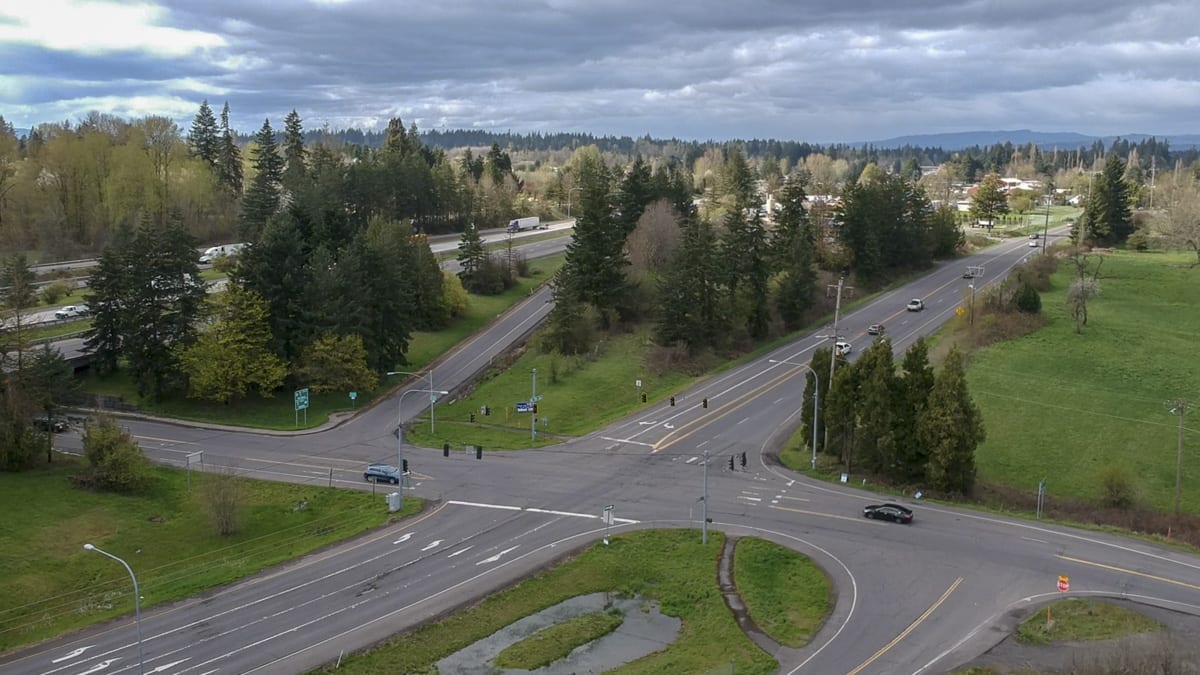
The council has been weighing a number of options to fund $66.5 million in traffic improvements needed in order to lift an urban holding designation that has held up development on approximately 2,200 acres in the area.
The option passed this week will put $26.6 million of that funding on the backs of developers through advanced traffic impact fees (TIF) and developer surcharges. The county will pick up the remaining $39.9 million through road funds, preservation, real estate excise taxes (REET), and grants.
The council also approved initial developer agreements for Holt Homes, Killian Pacific, Hinton, and Wollam. Those developers have agreed to pay a total of $12.5 million for infrastructure improvements through advanced TIF payments and developer surcharges.
Ron Arp, with Identity Clark County, spoke in favor of the agreement, but cautioned the upcoming TIF rate increase could be an impediment to rapid growth in the area. As of 2020, the Mount Vista area TIF rate will be $9,300 per trip generated, which would make it the third highest rate in Washington state, and $5,559 higher than the state average.
Developers will also likely be faced with another increased cost later this year when the council takes up requests from Ridgefield and Battle Ground school districts to increase school impact fees, to account for anticipated population growth.
The lone councilor to vote against the funding option was Temple Lentz.
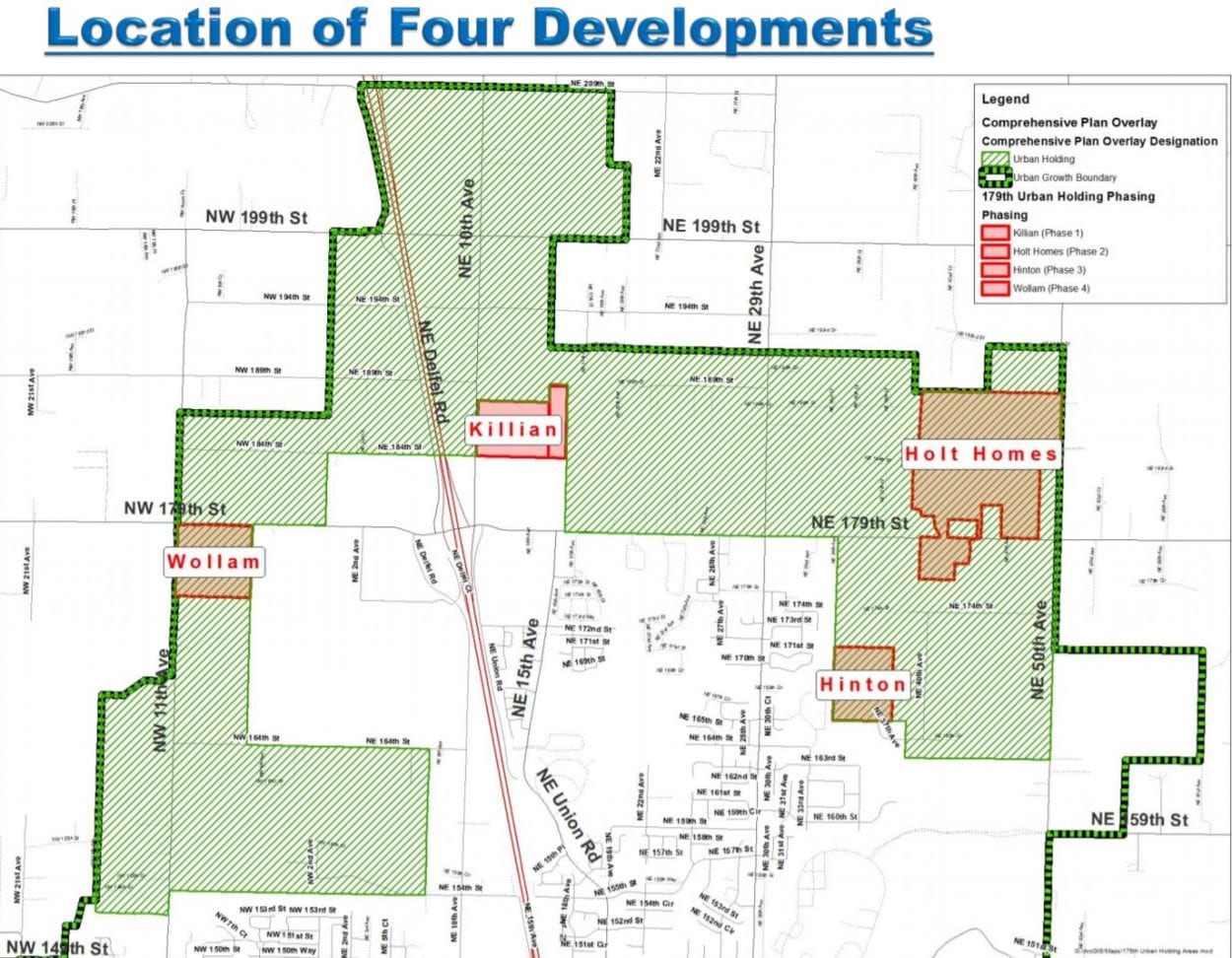
“The opportunity to engage in meaningful economic development is an exciting one for the county, but I do still have concerns,” Lentz said. “This project devotes extensive county resources to support private housing developers and some retail.”
Lentz said her primary concern is that the total cost of traffic improvements for the area is actually well over $160 million, but little has been said about how that will be funded beyond the first phase.
“With phase one contingent on being able to fund phase two, we’re being asked to vote, in 2019, on a project that is dependent on a plan that isn’t going to exist until at least 2026,” said Lentz. “And if we really do need all this infrastructure development, and I really believe we do, then we should be talking about all of it and not just phase one.”
Lentz said another concern is that the county’s plan could backfire if an economic recession hits, slowing growth in the area. If development slows down, so will the flow of impact fees, potentially delaying projects or leaving the county to pick up the cost through other funds.
“”With a recession on the horizon, a housing market that’s softening, and a plan that calls for the third highest fees in the state, with no guarantee of the infrastructure necessary to support development, it seems imprudent to me for us not to have a backup plan,” Lentz concluded.
While acknowledging they share her concerns, Lentz’s fellow councilors said it’s their view that the debate over how to lift urban holding in the 179th Street area has gone on long enough, and action needs to be taken.
“All of what we’re doing tonight has been planned; we just have to do it,” said Councilor Julie Olson, whose district includes much of the proposed development area. “And councils and commissions prior to today haven’t done it. And it’s a big decision, and a complex one.”
District 4 Councilor Gary Medvigy, who also represents land in the urban holding area, said he believes this is a necessary first step in bringing job growth to the region’s last major developable area.
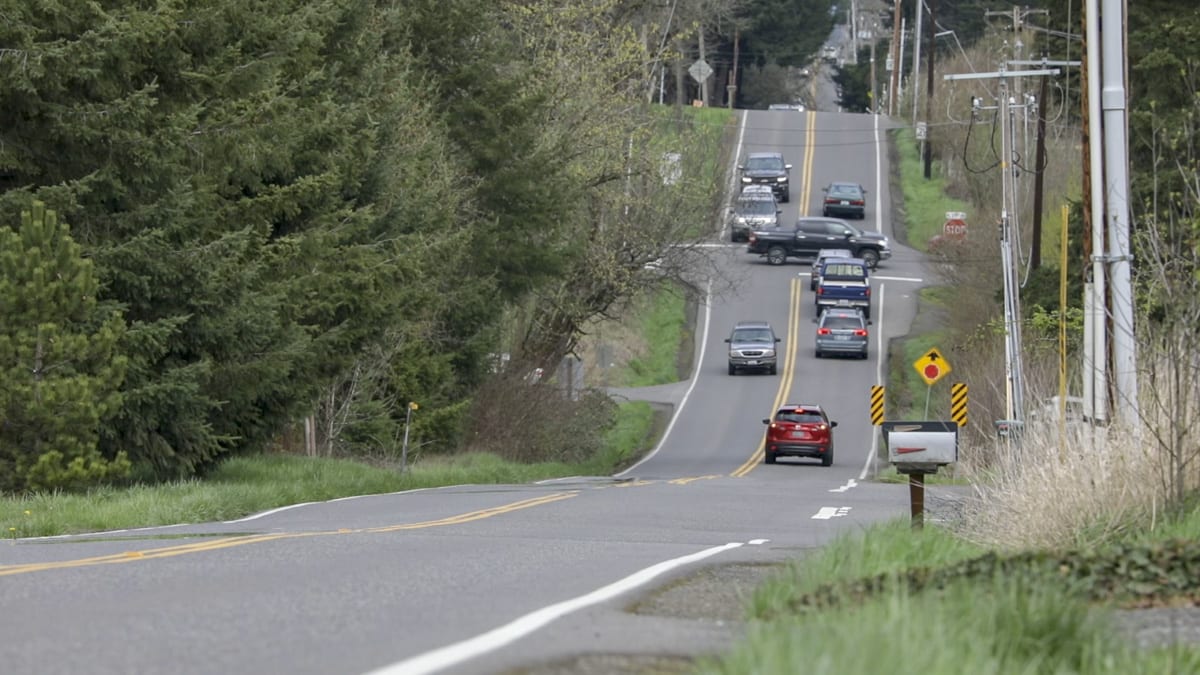
“We’re going to have a lot of opportunity to do this right, and hopefully create a diversity of jobs,” said Medvigy. “But just opening this aperture is going to create a tremendous amount of job potential this side of the river.”
Research done by E.D. Hovee and Company of Vancouver shows a full build out of nearly 5,300 acres in the I-5/179th Street area could bring over 5,600 units of housing, and nearly 7,700 jobs to the region. That would amount to an estimated $239 million in tax revenue from construction for Clark County, and a $34 million annual injection of tax dollars at full build-out.
“We’ve been doing business in Southwest Washington for about 50 years,” said Lance
Killian, who joked he was a young man when discussions first started around the 179th Street area. “From our perspective this area represents the largest economic opportunity that we have in Southwest Washington, in the near term and the long term.”
Under state law, the county must show adequate funding for infrastructure improvements in order to lift urban holding. But there were concerns that some of the developments could be well underway before other street improvements are funded.
“In a perfect world, certainly the county would have all the funds to commit to all of these public improvements and have them on the road before development actually occurs,” said Jamie Howsley, a land use attorney representing Wollam and Associates. “That’s just not how infrastructure is built in any jurisdiction where I’ve done work.”
Those traffic concerns were the primary focus of most of the residents who spoke during the public hearing. Many lived near the proposed Hinton development, which is south of 179th and currently only accessible via an unimproved road.
“At this point in time what we are doing is approving the lifting of an urban growth boundary,” responded County Chair Eileen Quiring. “At a later time the development plans will come about and environmental issues will be addressed at that time.”
Councilor John Blom echoed that later in his comments noting that, “each development is going to have its own review.”
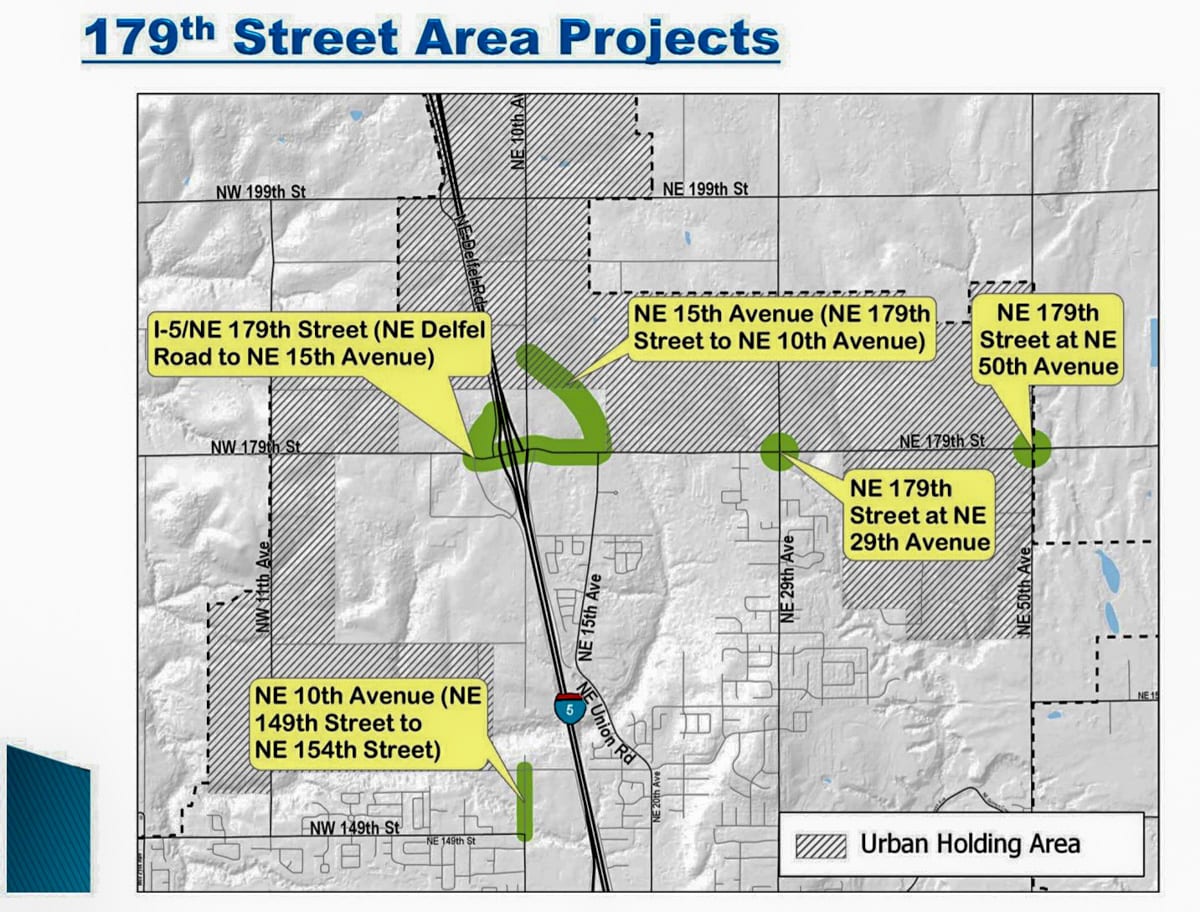
Phase one of the traffic improvements, likely to break ground sometime in 2023, will be a realignment of NE 10th north of 179th to join with NE 15th Avenue. Northeast Delfel Road west of I-5 will also be moved to make room for an eventual reworking of that interchange by Washington’s Department of Transportation.
Northeast 10th Avenue south of the Clark County Fairgrounds is also slated to be extended from 149th Street to 154th, and intersections on 179th at 29th Street and 50th will be reconfigured. Plans for those areas have yet to be finalized, but early concepts showed roundabouts may be used to increase the flow of traffic.
Phase two would include expansion of 179th from NW 11th Avenue out to 50th, as well as NW 10th past the Fairgrounds. There are also plans to connect NW 11th south of the Fairgrounds between 149th and 139th.
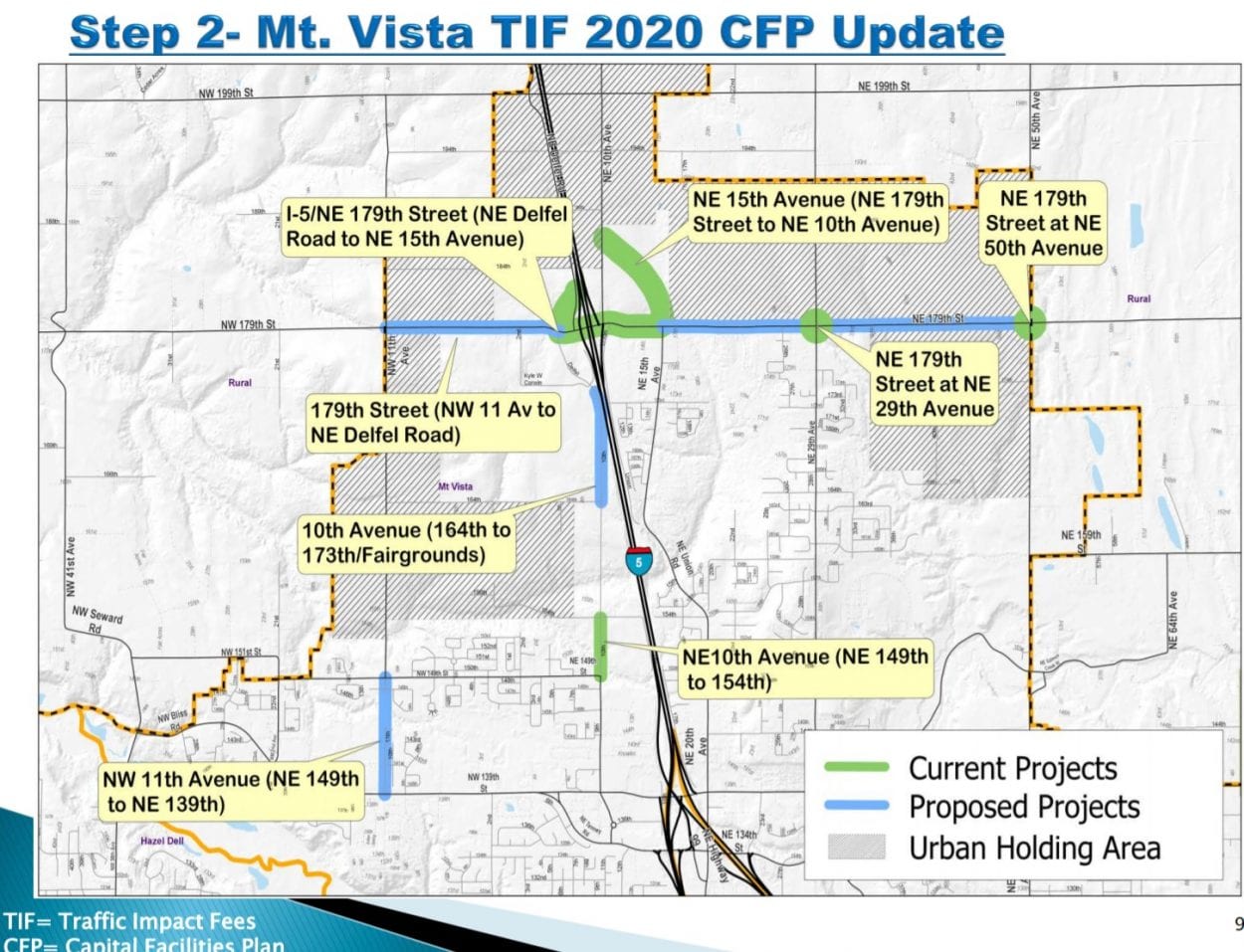
Currently, state funding for the I-5/179th interchange isn’t set to become available until 2023, but the county is hopeful that moving ahead with their own development in the area may push state officials to finally bump up the timeline on that.
“I do think the opportunity to have a connection in the Discovery Corridor is exciting, and there is great potential for employment lands here,” Lentz said. “However, I do think that … really focusing on employment lands and creating sustainable economic development is something that the county isn’t doing right now, and that this project doesn’t really get us much further on.”
Lentz said she’s also worried that the higher cost of developing in the area will mean the houses built there will be upper-middle class, and won’t do much to address the region’s housing affordability issues.
Medvigy and Blom responded that, much like Columbia Tech Center in east Vancouver, and Ridgefield’s recent job growth, housing had to come first before jobs.
“Whether it’s economic development, whether it’s housing, this is one piece — and the very first piece — in what’s going to be a very long journey,” said Councilor John Blom, noting that this area represents a chance for Clark County to develop something unique and better, including connected trail systems and mass transit.
“We have met multiple times with Clark County Parks and Rec, and working with them to try and think as big as we can in terms of not only what happens in the development, but also how it connects to other things in terms of a holistic network,” noted Killian, adding that they’ve also been having talks with Ridgefield School District about potentially siting a school on their property.
“This is about housing needs, this is about economic development, this is about expanding the tax base, we are going to be looking at school impact fees. So we are hearing, and we’re listening to the community,” said Olson. “All we’re doing tonight is allowing these developers, not just these four who came to the table early to help provide funding so we could build these critical links in infrastructure, but any developer who wants to come forward in the future once we lift urban holding.”




